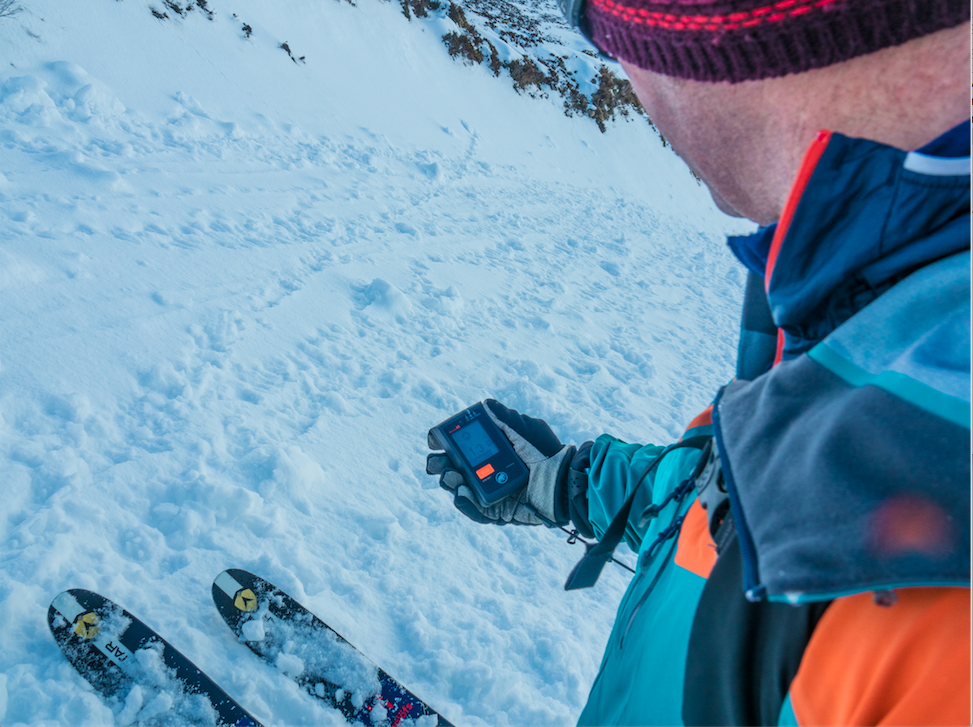How to choose an avalanche transceiver?


First up – an avalanche transceiver is not the kind of item you buy every year. It is likely that you will buy one now and keep it until just after you should have updated it a year ago! It is also potentially one of the most important purchases of your life – as I cannot imagine failing to find my ski buddies after an avalanche; then living my life knowing I saved a few quid on the cheapest model, or an out of date second hand unit. So before we dive into the specific options available, here are a few general pointers:
Let’s cover these off in more detail.
Face it – if you start off with something that is out of date already, it is going to be completely obsolete pretty soon. So DO NOT be tempted by anything but a recent three antenna digital transceiver – even if it does appear to be a bargain. The truth is, that transceiver technology is moving on at a great pace. Whilst the external box might look like any other, it is what lies under the hood that matters. The latest devices have far more sophisticated processors and electronics inside. Just like any device (from your PC to your SmartPhone) processing power equals speed and reliability. These are, after all, the key features of a transceiver!
This all comes down to understanding how you plan to use this and how you define what your needs really are. That often means the simplest, or the one that suits your brain – not necessarily the one with the most features. BCA Trackers prioritise finding the first burial: perfect when skiing in a disciplined group, away from other skiers, or with a Guide. Most European digital units handle multiple burials far better: when our mates (or a neighbouring group) all get avalanched at once. So think about how (and where) you ski.
Most transceivers come in two models: a complex model with a whole host of features; and a simple to use model, with exactly what you need and no more. Sure, as an experienced user you might use the tools behind the interface and, if called upon in a huge incident, may have have the training to resort to analogue mode for complex multiple burials. But if that has your head swimming in wonder, you don’t want to get lost in a complex menu when the proverbial hits the fan. Just go for the simple model, in order to . . .
The best transceiver in the world is the one you know how to use – and use under pressure! Every transceiver has its own particular foibles and nuances, so you need to be familiar with one in training, if you hope to understand what’s going on in a real situation. The greatest enemy to an effective companion rescue is losing trust and confidence in what is going on. You need to be calm, collected and systematic – and this all goes to pot when people start doubting their devices.
Some devices are more intuitive and simple to get a grip of – but we are all wired slightly differently. Do you prefer using a MAC or a PC? Well, there is also some variety in the software interface between brands – so most people find that some units suit them better than others.
The Ortovox pin-point has a nifty “zeroing in” graphic that works for some, but not for others. The Mammut has a full spectrum of sounds, graphics and units that simply tell you what to do – perfect if you are happy to follow instructions. BCA trackers have a no-frills visual LED system, to keep things simple.
The top-tip here is to try before you buy – so you know what works for you. Quick and obvious in the shop usually means quick and slick in a crisis!
As the Technical Director of the BMG and running the Avi-Geeks courses, Bruce Goodlad has taught more people to use their beacons than most. We asked him for some anecdote on what he has seen
Over to Bruce….
“A useful test is to hide a transceiver in the garden and then give each test unit to my five-year-old (in search mode) and see which unit he finds easiest to use. If a five-year-old can do it with no prompting this ‘usually’ translates to adult users.
The caveat is that if you are used to a certain interface it is worth considering staying with that brand. The BCA units all deliver the info in the same way, which is different to Mammut or Ortovox. If you are indifferent brand-wise, try a few and see which you prefer.
Most issues with transceivers come down to unfamiliarity and poor practice – so practice relentlessly. My five-year-old is almost always fastest with the Mammut unit but my three-year-old prefers the frog noise on the BCA Tracker 3!”
When you purchase, it is worth considering the after sales service and how easy it is to keep your transceiver on track. Transceiver firmware updates regularly (just like your smartphone). Furthermore, the frequency can simply drift over time.
There is a tolerable range, but the only way to know if you have drifted into obsolescence is to get your device serviced at the end of each season.
And finally, if you really want to know what I think, then if in doubt just go for the Mammut Barryvox. From everything Bruce and I have seen it outperforms the competition in speed of familiarity; and speed/consistency of search results.
Regardless of who uses it . . .
Useful links: